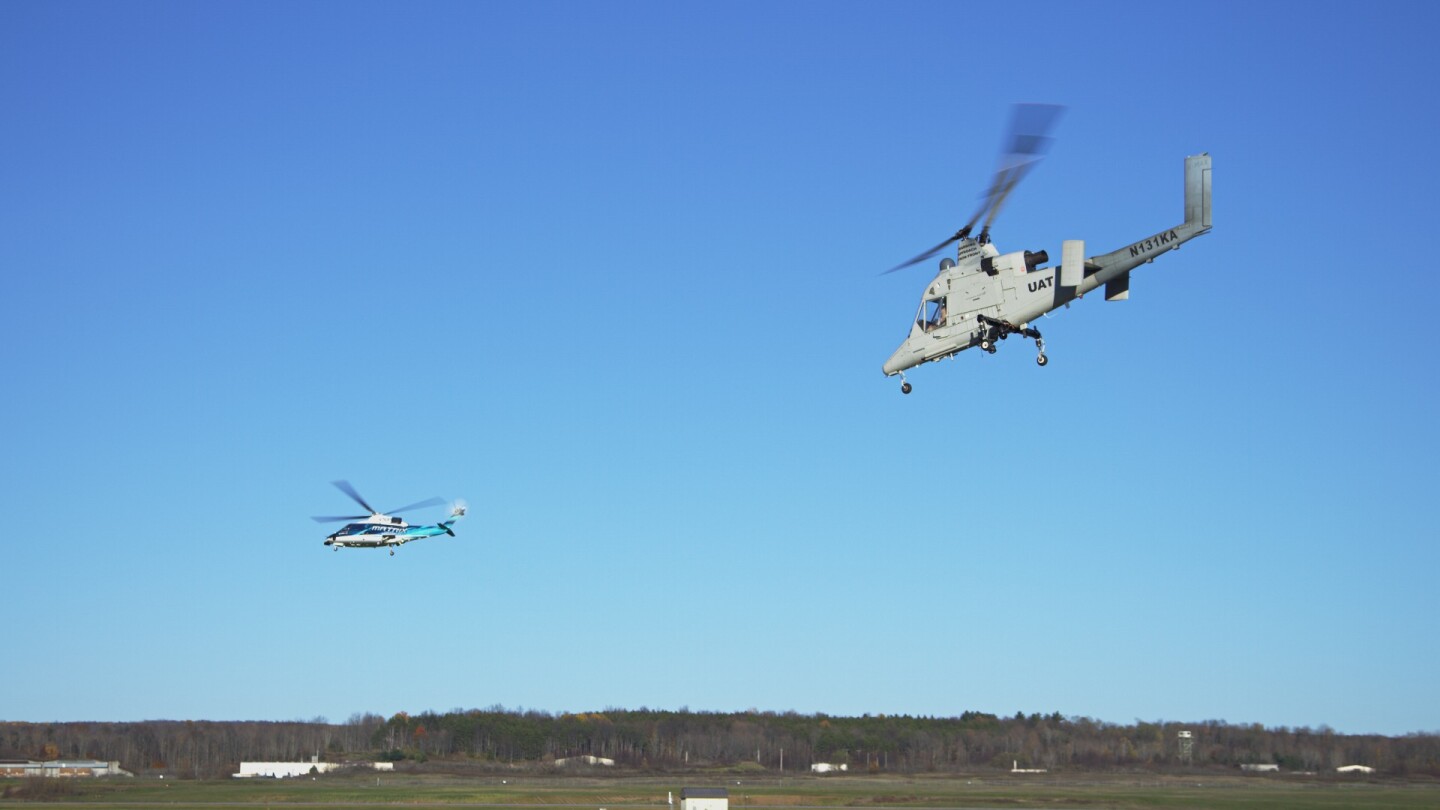In what Lockheed Martin claims is a first, pilot-optional helicopters and Unmanned Aerial Systems (UAS) have worked as a team to successfully carry out firefighting operations and a search and rescue mission. According to the company, the purpose of the demonstration was to illustrate how autonomous aircraft can not only aid in rescue operations, but also increase their efficiency.
For the exercise a pilot-optional Kaman K-MAX was teamed with an Indago quadcopter in a firefighting operation. Using controlled fires as targets, the Indago was tasked with finding the "hot spots" and passing on the locations to an operator, who relayed this to the K-MAX. The robotic helicopter then used a cable-mounted bucket to pick up water from a pond and drop it on the fire to extinguish it.
Meanwhile, a modified S-76 commercial helicopter called the Sikorsky Autonomy Research Aircraft (SARA) worked with a Desert Hawk 3.1 fixed wing UAS to locate and recover a "lost" person. In this exercise, the Desert Hawk carried out the search for the missing person and, once located, the SARA completed the search operation and directed the rescuers to the scene.

A key point of the demonstration was that the K-MAX and SARA were integrated with Lockheed subsidiary Sikorsky's MATRIX technology, which uses advanced sensors and systems intelligence to help operators fly their craft in both manned and unmanned modes. In addition, it allowed SARA and K-MAX to communicate with one another and to carry out safe autonomous landings.
"Our goal is to support the integration of autonomy into aviation to improve the safety and capabilities for military and commercial missions,"says Mark Miller, vice president, engineering and technology at Sikorsky. "Utilizing MATRIX to support the mission in this demonstration highlights an example of the ability to reduce pilot workload and augment mission performance.
The video below shows the unmanned firefighting and rescue demonstration.
Source: Lockheed Martin

















